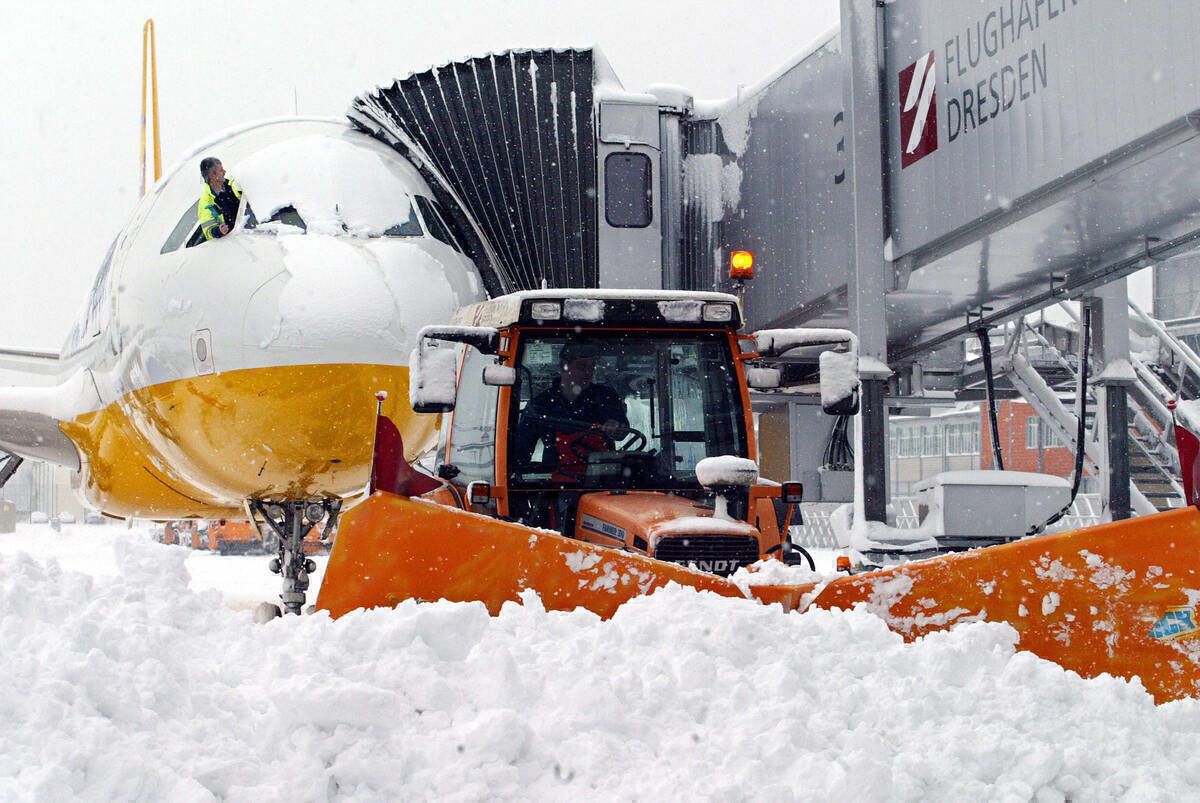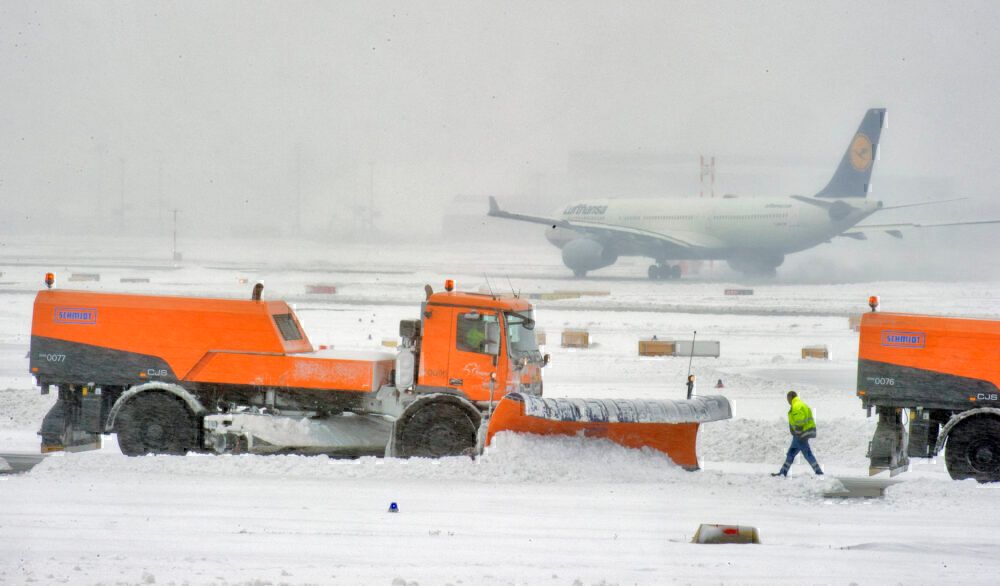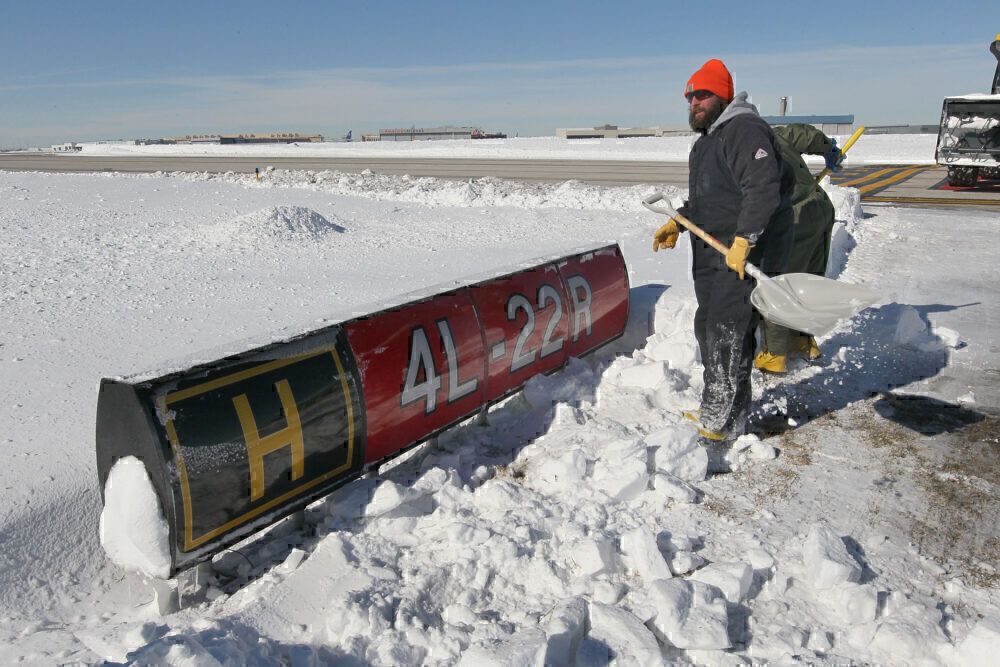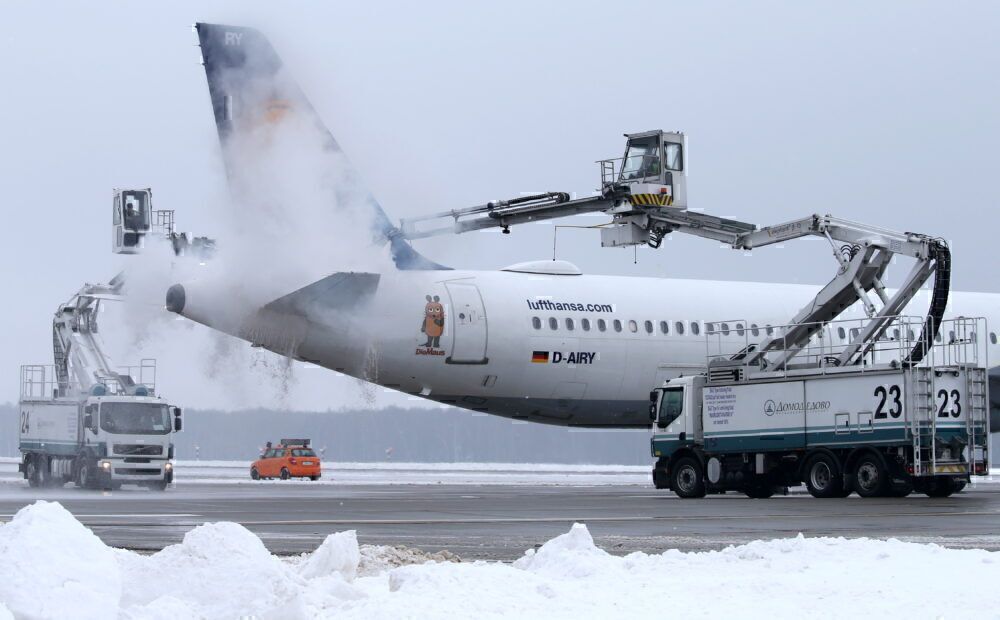Snow is like Marmite. You either love it or hate it. While kids love making snowmen, it can be a real headache for airports and airlines. As such, both parties must take measures to minimize the danger and disruption caused by wintry weather.
Clearing snow from the runways and taxiways
A crucial part of keeping airports open during adverse winter weather is effectively managing the buildup of snow and ice on the taxiways. Aircraft can land on ice, as Australia proves with its Airbus A319 supply flights to Antarctica. However, it's not ideal.
Stay informed: Sign up for our daily aviation news digest.
Firstly, snow on the runway can cover runway markings and potentially lights, depending on its depth. It will also affect the take-off and braking capabilities of aircraft. This can become especially dangerous if the surfaces become icy. Just take a look at this Russian S7 aircraft sliding across the taxiway:
As such, on very snowy days, it is not unusual to see a team of snowplows tending to the runways and taxiways to keep them clear of snow and ice. It may seem odd seeing such machinery at an airport such as London Heathrow, where snow is infrequent. But, just one day of heavy snow at one of the world's busiest airports can wreak havoc across the globe.
In addition to keeping the taxiways and runways clear, airports will also seek to ensure that the airport's essential signage is kept clear of snow. Signage, such as runways indicators, are necessary to alert pilots taxiing aircraft where they are and where they're going.
Deicing aircraft
Another crucial part of winter airport operations is deicing aircraft before their departure. De-icing fluid may be sprayed on an airplane before departure to remove any snow or ice built upon the aircraft's flight surfaces. If they remained, they could disrupt the airflow over the flight surfaces. In the worst cases, this could down a plane.
According to NASA, there are four different types of de-icing and anti-icing fluids, handily named type I, II, III, and IV. Type one fluids are very dilute and will quickly come off of an aircraft moving through the air. The other liquids are slightly thicker, meaning that they remain on the aircraft for longer. However, they also require a greater airspeed to blow off of the wings.
NASA states that Type IV, the thickest of the lot, can protect the aircraft from frost or freezing for up to one hour and 15 minutes. However, it requires an airspeed of 100 knots to remove
Have you ever flown from an airport during snowy weather? How was it? Let us know your thoughts in the comments!




